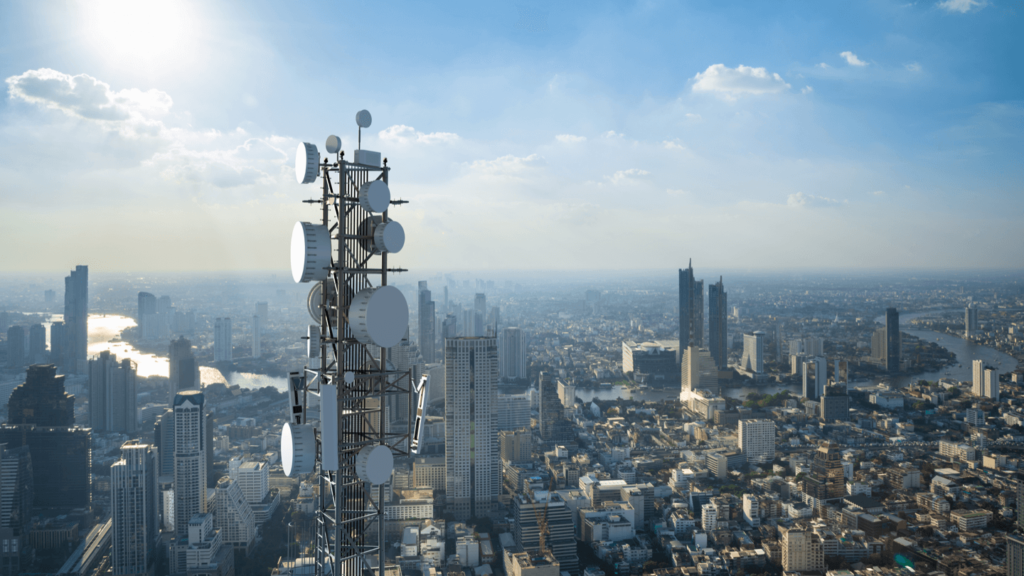Think you know 5G? Think again! We’re separating fact from fiction so you know what to expect from this emerging technology in 2020.

- Source: AllConect
- Written by Lisa Iscrupe. Edited by Trey Paul
Connecting your phone to the cellular network is something most people don’t give much thought to. The choice of 3G vs. 4G vs. LTE is usually done by your carrier. But now, the huge amount of attention that 5G is getting for its super-fast speeds has gotten people interested in this new technology. And along with that curiosity has come a torrent of misinformation and rumors about what 5G can and can’t do.
So, what’s true, what’s false and what is just patently concocted? We break down the myths, rumors, and lies surrounding 5G.
What is 5G?
5G or fifth-generation cellular wireless is a form of mobile communication and technical ground rules that outline how the network operates. It’s the latest iteration of mobile communication, building on the current 4G and standard LTE networks. The new 5G networks are powered by a brand new technology referred to as millimeter wave or mmWave.
What does 5G promise?
5G networks promise faster connections with reduced latency and a higher data rate. Devices on the network will be able to work en masse in large crowds and transfer information in a fraction of the time — you could download a two-hour movie in 3.6 seconds on a 5G network vs. 6 minutes on a 4G network.
Who offers 5G?
Verizon was the first to start rolling out a 5G network in October 2018 and since then we’ve seen AT&T, Sprint and T-Mobile start rolling out their own networks.
Let’s start with the facts
Fact: I’ll need a new phone once 5G networks roll out
To truly take advantage of all that 5G has to offer, you’ll need a 5G-compatible phone. On the bright side, since 5G networks are building on top of rather than replacing the existing 4G and 4G LTE networks, you won’t need a new phone right away. All existing phones will still be able to connect to 4G networks and operate just fine.
Fact: We need 5G technology to keep up with the rapidly developing world
The United States started a little behind when it comes to 5G technology. South Korea has had established 5G networks since Dec. 2018, three carriers in China launched 5G in Oct. 2019 and four providers rolled out 5G networks throughout 2019 in the United Kingdom.
The U.S. is catching up at a steady pace though, with carriers like AT&T, Verizon, and T-Mobile leading the way.
Fact: I’ll be able to use a 5G network as soon as I get a 5G phone
This is true, but only if you live in one of the cities where 5G networks currently exist or where the technology is expected to come in 2020. If that is the case, then you’ll be able to take full advantage of a 5G network as soon as you get a 5G-compatible phone.
If you’re not in one of those markets, though, you may have to wait. It may still take a few years for the network to truly cover the majority of the United States. For instance, Verizon first started rolling out 4G LTE in 2010 but didn’t replace its entire 3G network until the end of 2013.
To be determined: 5G frequencies are going to take weather predictions back to the 1980s
Many meteorologists have expressed concerns that 5G networks will interfere with the satellite data they rely on to make accurate weather predictions and warn people about potentially hazardous situations, such as hurricanes, tornadoes, and more.
This is a real concern, but the conversations surrounding how the 5G spectrums will be divided between the telecommunications and weather community are ongoing. Meteorologists “are calling for further dialogue between the weather and telecommunications communities. Meteorologists and atmospheric scientists said they are not seeking to hinder 5G rollout, noting its promising weather-related applications,” according to SpaceNews.
Where can I access 5G networks?
- AT&T announces 28 new markets among its growing 5G network
- Verizon 5G availability continues to expand in 2020
- DISH purchases Boost Mobile to break into the 5G market
5G fiction
Now that we’ve looked at the top 5G facts, let’s dive into some of the 5G myths that you may have heard about.
5G frequencies are going to microwave our brains
This myth originates from a 2000 graph by physicist Dr. Bill P. Curry that showed a steep increase in microwave absorption by the brain at higher frequencies, which led to fears of 5G health risks.
Multiple scientists have debunked this myth stating that 1) Dr. Curry’s data looked at exposed tissues in a lab, not cells deep inside our body, and 2) it failed to take the “shielding effect” into account. (The shielding effect refers to our skin’s ability to block out higher radio frequencies and protect our insides.)
5G networks spread the coronavirus
Yes, this is a myth that is out there on the web. Despite sounding ridiculous, this conspiracy theory gained some traction in the early days of the COVID pandemic.
But rest assured, germs are not yet capable of teleportation.
5G is going to replace 4G
5G networks are built on top of the existing 4G LTE networks. 4G and 4G LTE networks essentially provide the base for the current 5G structure, and as such, will not be going away anytime soon.
In fact, in many areas, 3G coverage still exists for the same reason — because it fills in the gaps for 4G coverage.
Do you want to get more information of interest like this? Subscribe to our newsletter using the form at the bottom of this page. We invite you to visit our products section to learn more about our SPIRO solutions.
